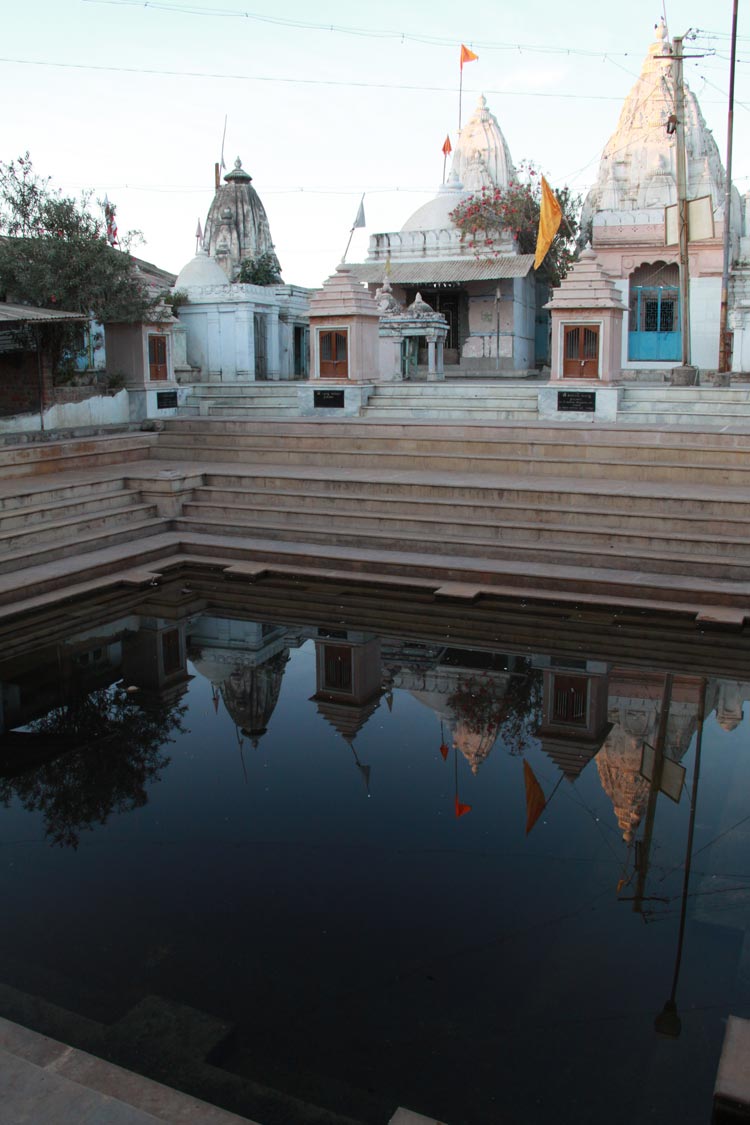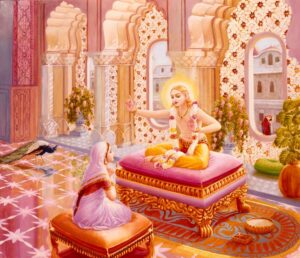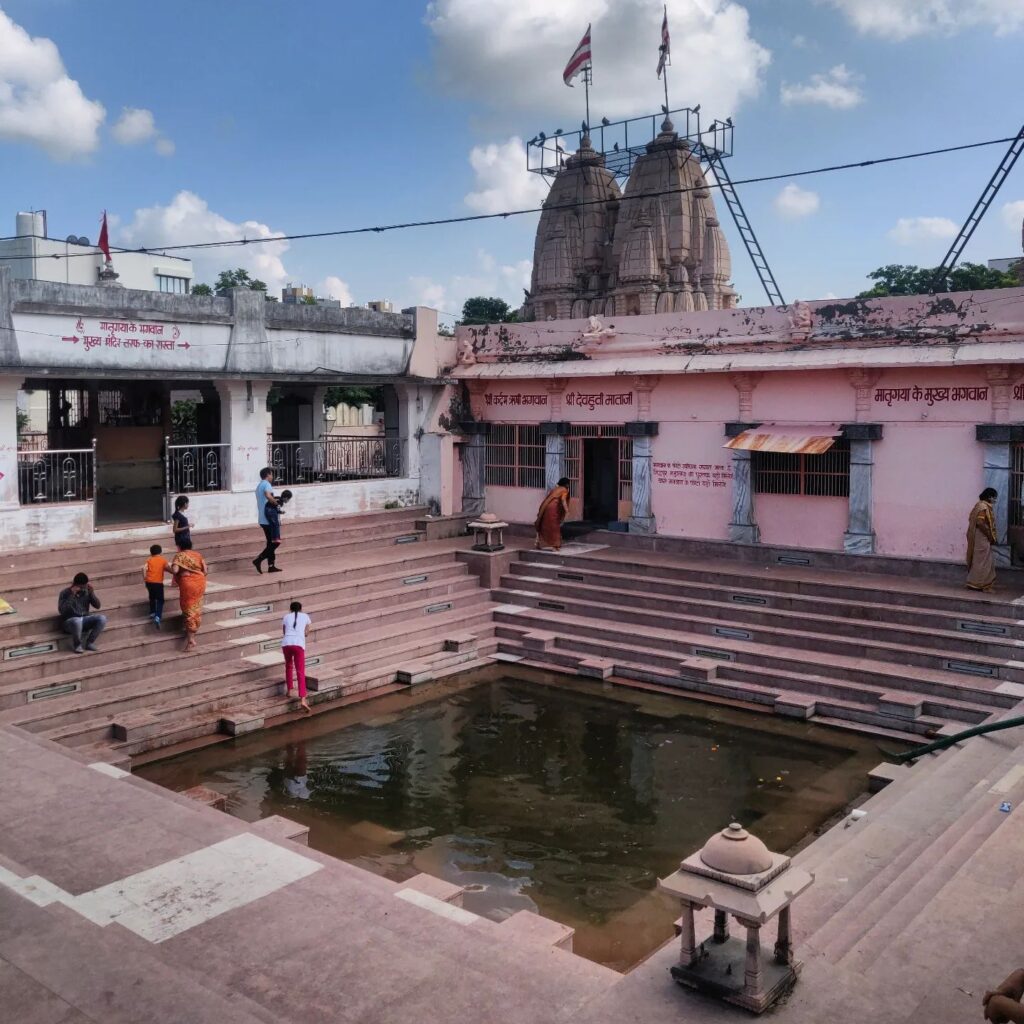
Siddhpur or Matru Gaya, Gujarat is the only place where one must perform the shraddha for one’s departed mother. Siddhpur is famed as the Kashi of Gujarat, and it is one of the important holy places of the Saraswata Mandala of Gujarat. It is also known as the Paris of Gujarat.
Matru Gaya is one of the Siddha Peethas on the banks of River Saraswati and Bindu Sarovara. It is a sacred place where there used to be the ashrama of Kardama Muni and Devahuti. Lord Kapila, the son of Kardama Muni enlightened His mother in this holy place.
Shraddha for departed Mother in Matru Gaya
In the Manu Smrti, performing shraddha is recommended for every living entity. Although shraddha can be performed at one’s home, to achieve the multiplied benefits, the shraddha must be performed on the banks of a holy river, a holy sarovara, the banks of the confluence of two or more rivers or a holy place.
Shastras recommend that the shraddha must be performed at least at the following places – Vishnu Gaya, Kashi, Badrikashrama, Jajpur and Pithapuram whether it is performed at any other place or not. And for one’s departed mother, one must perform the shraddha at Siddhpur in Gujarat.
In the Mahabharata, the Siddhpur area is glorified as the Dharmaranya Kshetra. Anyone who pleases one’s pitrus and the devatas here, acquires the result of performing various yajnas. Just by entering this holy place, one’s all the sins are relinquished.
Siddhpur is originally Matru Gaya
Matru Gaya has been known as Siddhpur since the ancient times. As per the Vedic literature it was known as Sri Sthala. It is the place where Devahuti achieved siddhi or perfection of one’s life. Perfection of live means liberation from the chains of this material world. Srimad-Bhagavatam’s third canto speaks in detail about the Sankhya Philosophy, Kardama Muni and the Kapila Muni.
Sage Kardama was one of the sons of Brahma and a Prajapati. On the order of Brahma to beget the progeny, he executed penances for ten thousand years on the bank of River Saraswati at Matru Gaya. Pleased by his devotion, Lord Narayana blessed him with His darshan. Looking at the dedication of Kardama Muni, Lord Narayana was so pleased that tears rolled down His divine cheeks. From those tears formed a lake called Bindu Sarovara. Bindu means a drop of tear.
After having darshan of Lord Narayana, Kardama Muni offered super excellent prayers to further please Him. Lord Narayana, being satisfied, blessed Kardama Muni with a suitable wife – Devahuti, the daughter of Swayambhuva Manu and Shatarupa. He also blessed him with nine daughters and one son – Kapila, the plenary expansion of Lord Narayana.
After the divine appearance of Kapila Muni, Kardama Muni offered Him prayers and left to the forest on the path of back to Godhead.
Later, Kapila Muni instructed His mother in the system of Sankhya-yoga which concentrates on the glories of devotional service. He dispelled the doubts of His mother and her ignorance with the knowledge of Sankhya-yuga.
After receiving the instructions from Kapila Muni, Devahuti became liberated and achieved the Kapila Vaikuntha Loka. The material elements of her body transformed into a flowing river. That river is the most sacred of all the rivers. Anyone who desires perfection goes there and takes a bath in that river.
Performing the shraddha at Matru Gaya
Parashurama performed shraddha for his mother Renuka at Siddhpur and offered the pinda to her departed soul. Since then, all the followers of Sanatana Dharma have begun to perform the shraddha in Siddhpur or Matru Gaya.
Devotees travel to Siddhpur and take a bath in the holy Bindu Sarovara, then perform the shraddha for one’s departed mother. Earlier devotees used to perform this shraddha on the banks of River Saraswati.
The History of Siddhpur
Around 10th century AD, Siddhpur was ruled by the Solanki Rulers. Siddharaj Jaisingh had built a magnificent capital city at Siddhpur. He had constructed a wonderful temple dedicated to Lord Shiva known as Rudra Mahalaya which rose to three storeyed shikhara. The temple was built on 1600 pillars, had twelve doors, the mantapa in the center and the porches in all the directions. There were eleven temples dedicated to Lord Shiva surrounding the main temple.
He constructed the bathing ghats on the banks of River Saraswati too. During the twelfth century, Mohammad Ghori destroyed the beautiful city of Siddhpur on his way to Somnath. He killed 30,000 Hindus in this massacre of the Solanki empire. Later Ulugh Khan and Ahmed Shah of Amvadabad mercilessly destroyed the Rudra Mahalaya and converted the grand temple into a mosque.
Places to see in Siddhpur
Bindu Sarovara
This is the main tirtha of this place which was created from the tears of Lord Vishnu. It is customary to take a holy dip in this tirtha before performing the shraddha, even otherwise devotees take a holy dip here. There are other 2 tirthas here – the Alpa River and the Gyanavapi. Bindu Sarovar is one of the Pancha Sarovaras – Mansarovara, Narayana Sarovara, Bindu Sarovara, Pushkara Sarovara and Pampa Sarovara.
The Kapila Muni Temple
On the banks of Bindu Sarovara, one can have darshan of Kapila Muni, Gaya Gadadhara and Lord Parashurama. This is one of the few ancient temples dedicated to Kapila Muni in the Bharata Varsha.
The Siddha Peepal Vata
Under this tree, Lord Kapila sat and delivered the Sankhya Philosophy to His mother.
The Ruins of Rudra Mahalaya
Although the grand temple was destroyed by the Muslims, one can still see the pillars of the temple which are now nothing but as ruins. It will give you fair idea of our culture and the grandeur of the temple.
How to reach Siddhpur
To reach Siddhpur, one can travel with Tirtha Yatra on the Pancha Dwarka Yatra. Without any hassles, you may perform the shraddha for your ancestors.
If you want to travel on your own, you may follow this route:
Siddhpur is located within the Patan area of Gujarat. It is well connected by Roadways, Railways and the Airway.
By Airway – the nearest airport is Karnavati (Amvadavad), which is connected with rest of the world.
By Roadways – from Karnavati, you may take a taxi or a bus to Patan. From Patan, you may take a taxi or auto to Siddhpur.
By Railways – the nearest railway station is Amvadabad. From there you may travel on road. Siddhpur also has a railway station.
Best time to visit Siddhpur
The best time to visit Siddhpur is from October to March when the weather is ideal. Avoid traveling on Amavasya day, Pitru Paksha or any other day recommended for shraddhas, unless you wish to offer shraddha yourself.
0












Leave a Reply